Archive
Carola Gregor
- Carola
- Gregor
Margarete (Grete) Meyer, Grete Gorodiski, Grete Goreau
- 20-04-1901
- Bremen (DE)
- 1989
- Chappaqua (US)
- PhotographerSculptor
The German émigré photographer Carola Gregor was an animal and child photographer and published some of her work in magazines and books. Today her work and life are almost forgotten.
Word Count: 30
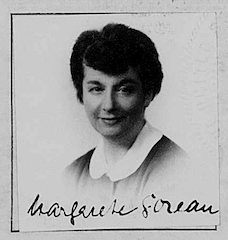
Portrait of Carola Gregor (cutout of her papers of naturalisation). 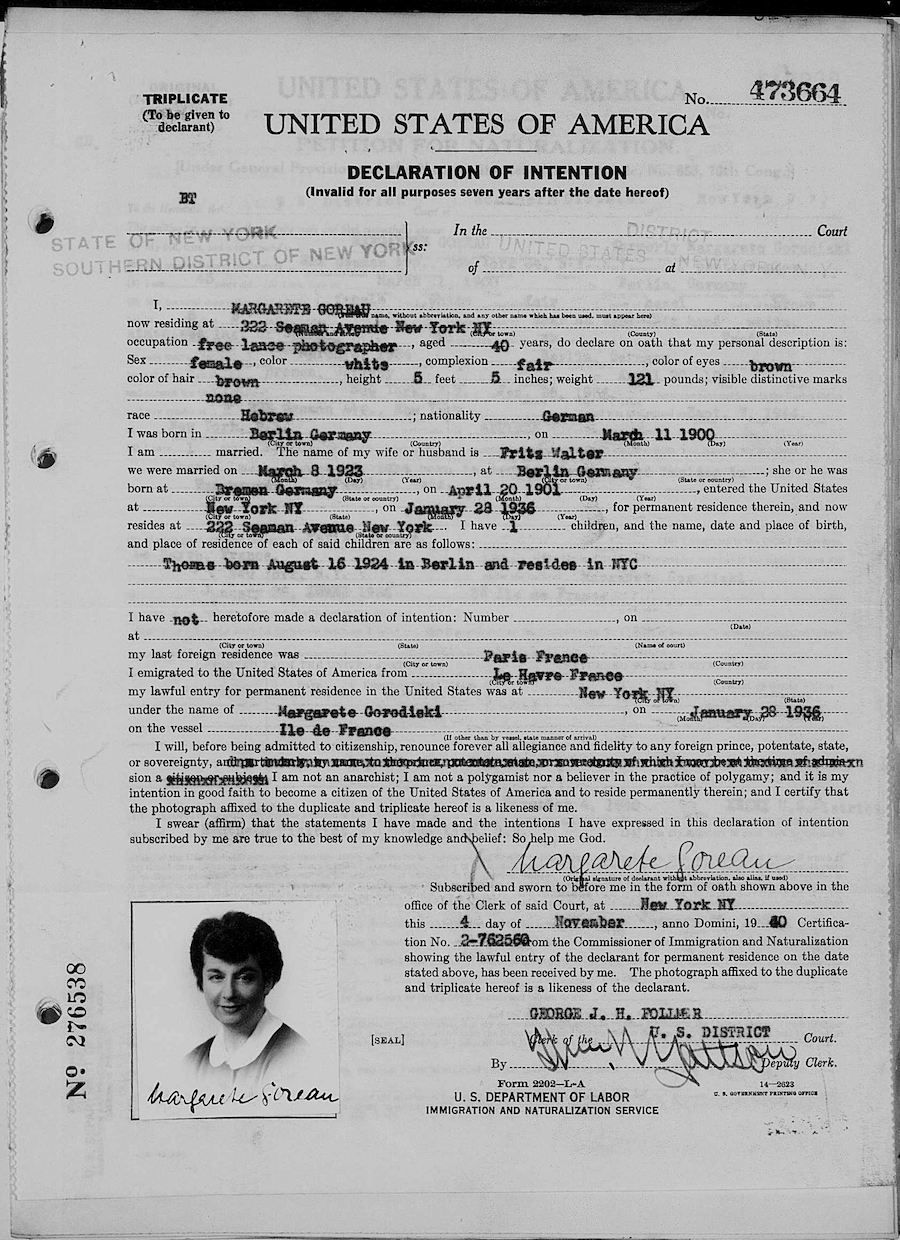
Petitions for naturalization from the U.S. District Court for the Southern District of New York of Carola Gregor (Naturalizations, box 1018-1020, cert. no. 513486-513958, 9-12 Apr 1945, Records of District Courts of the United States, 1685 - 2009, RG 21. National Archives at New York, https://www.familysearch.org/ark:/61903/3:1:3QS7-99HD-2WF8?i=1079 & cc=2060123 & personaUrl=%2Fark%3A%2F61903%2F1%3A1%3AQP7X-FZX8">familysearch.org). 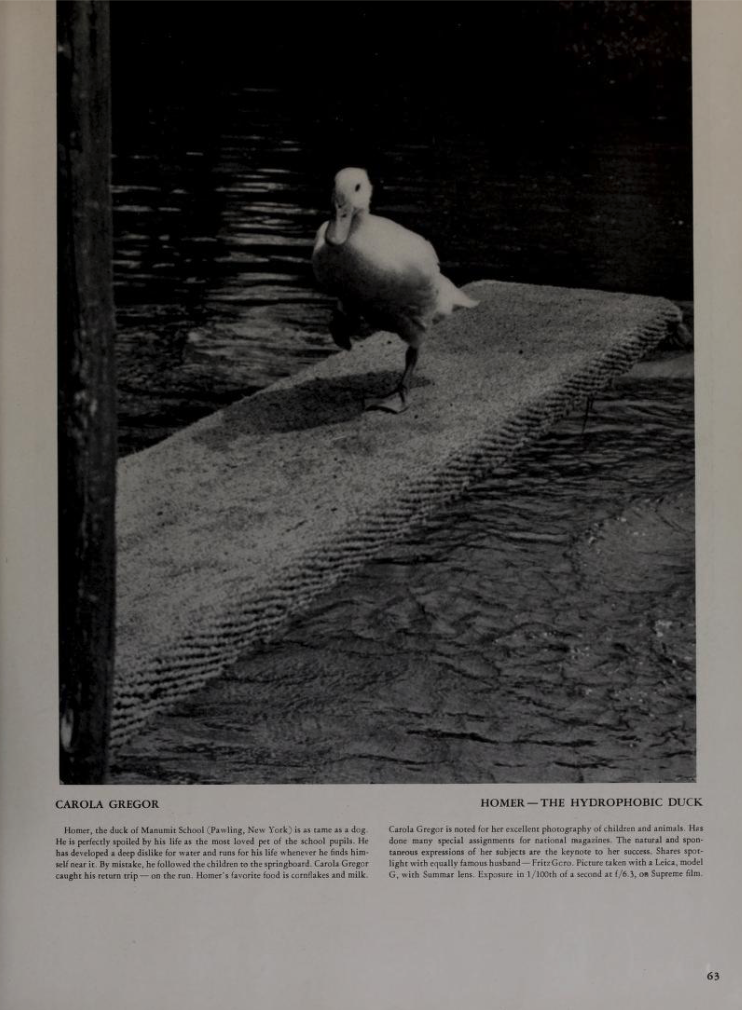
Homer- The Hydrophobic Duck by Carola Gregor published in U.S. Camera 1943, p. 63 (Photo: Helene Roth). 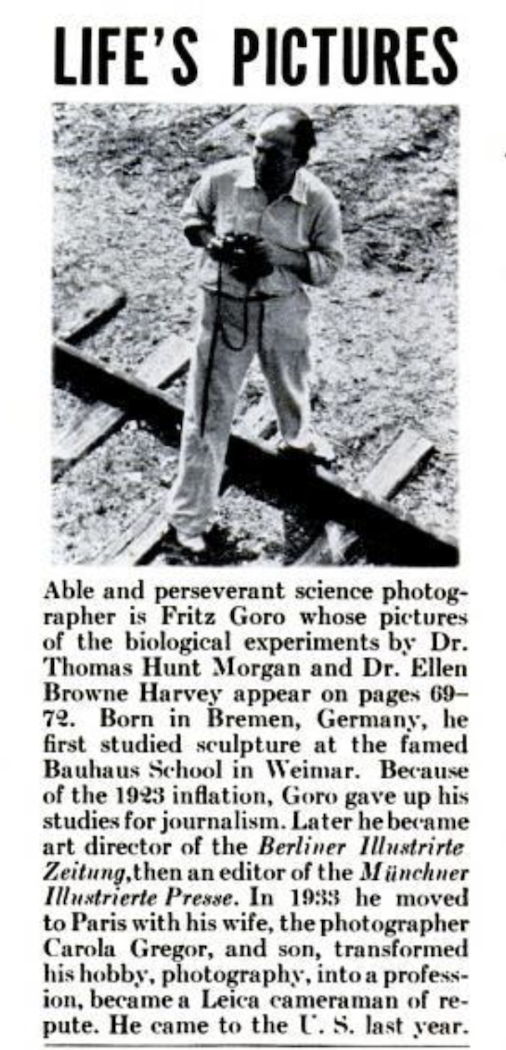
Portrait of Fritz Goro by Carola Gregor, published in Life, 13 September 1937, p. 104 (Photo: Helene Roth). 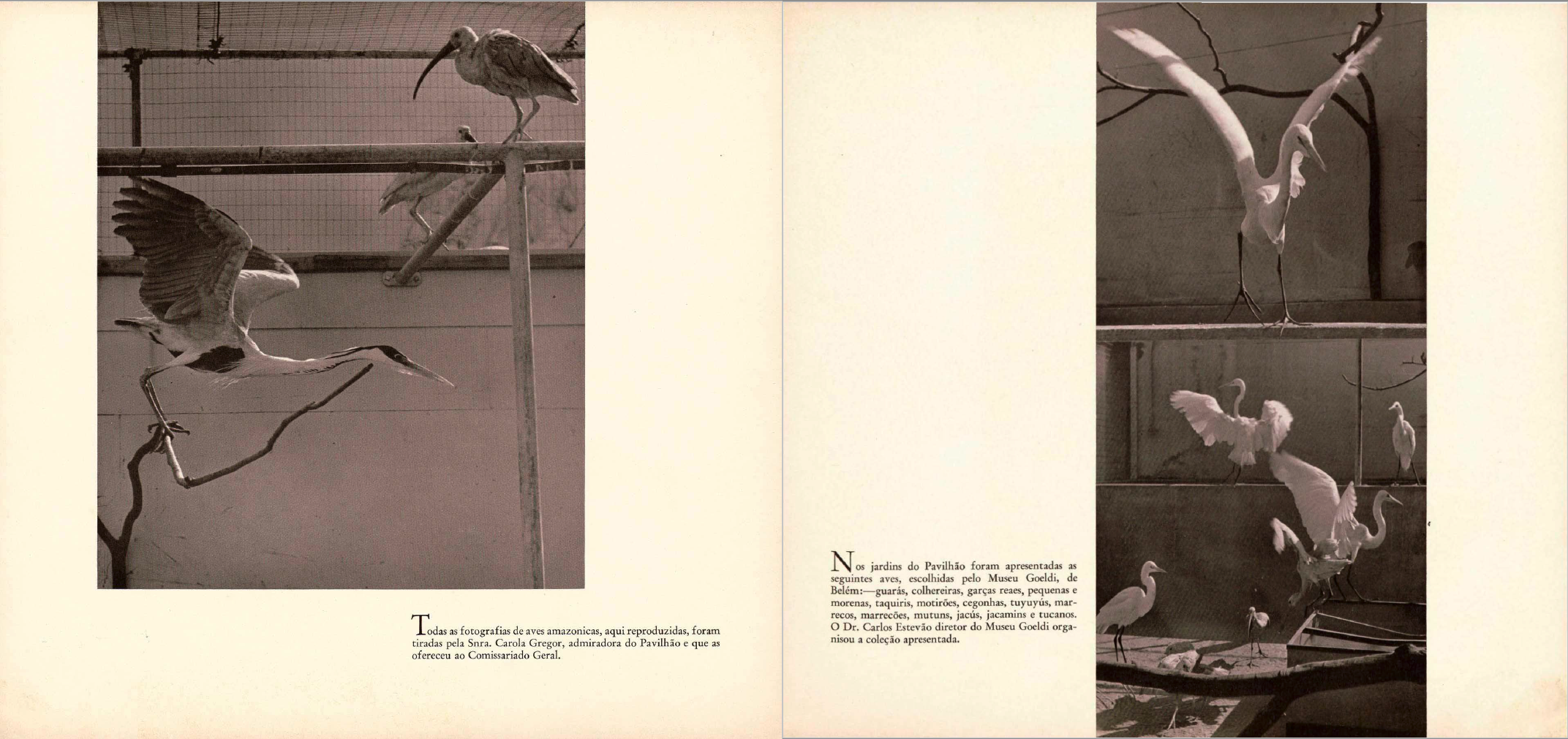
Photograph of Amazonian birds by Carola Gregor for the brochure Pavilhão do Brasil. Feira Mundial de Nova York de 1939, pp. 11–12 (Photo: Helene Roth). 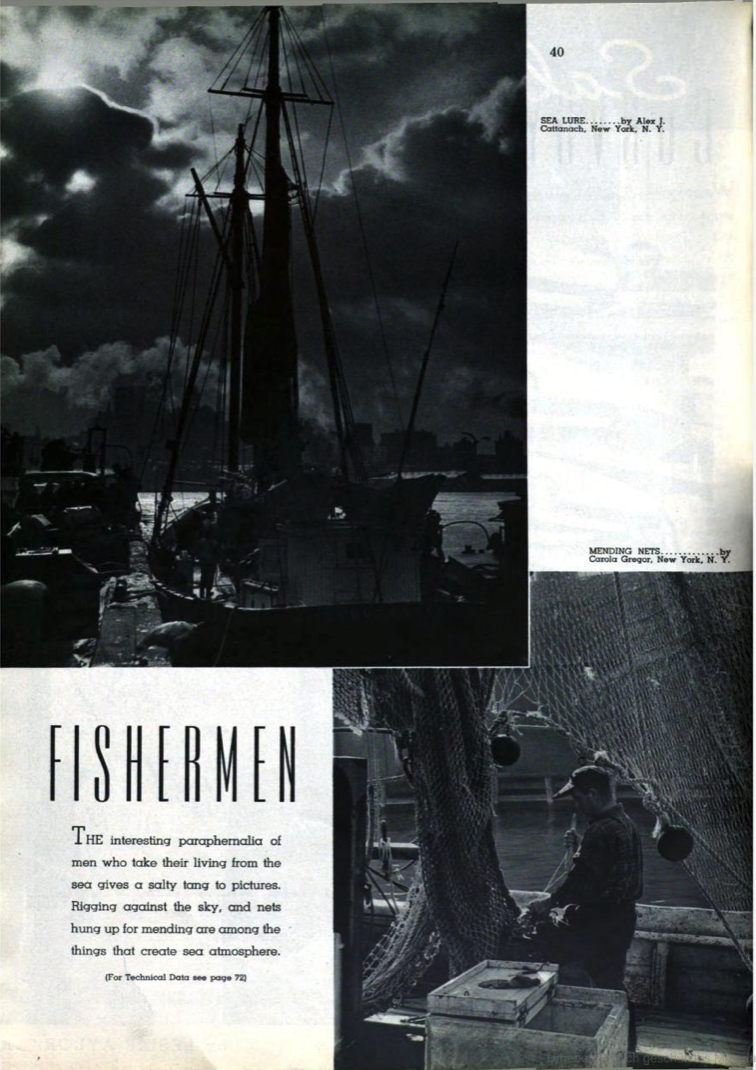
Mending Nets by Carola Gregor, published in Popular Photography, October 1942, p. 40 (Photo: Helene Roth). 
A gleaming spider by Carola Gregor, published in Popular Photography, August 1948, pp. 81–82 (Photo: Helene Roth). 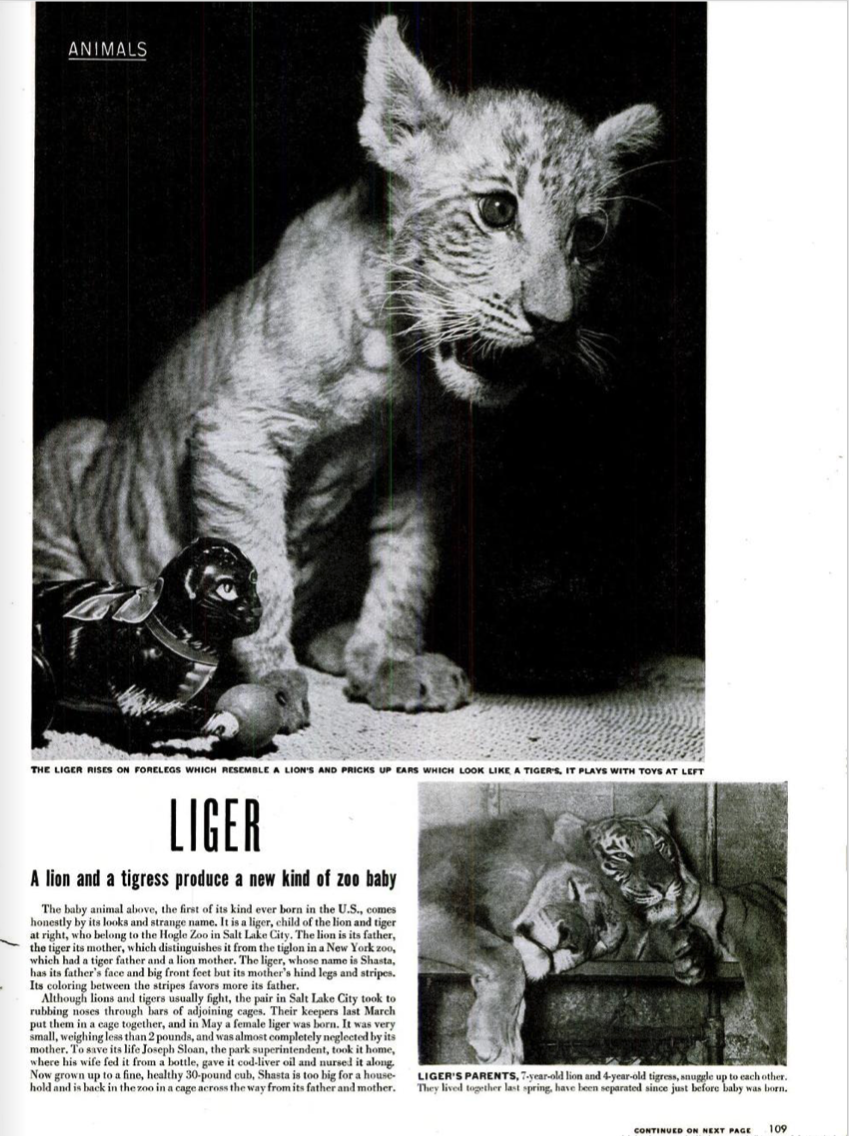
Reportage “Liger. A lion and a tigress produce a new kind of zoo baby” with images by Carola Gregor, published in Life, 20 September 1948, p. 109 (Photo: Helene Roth). 
Reportage “Liger. A lion and a tigress produce a new kind of zoo baby” with images by Carola Gregor, published in Life, 20 September 1948, pp. 111–112 (Photo: Helene Roth). 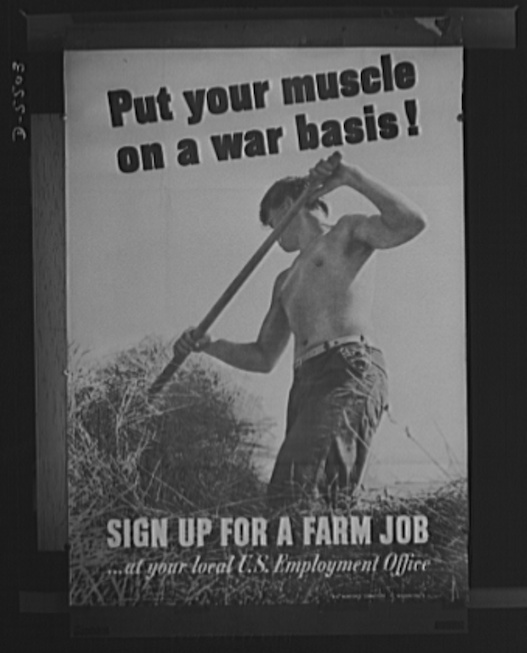
War Manpower Commission. Farm labor poster distributed to Department of Agriculture. Photograph by Carola Gregor (Library of Congress, Prints & Photographs Division, Farm Security Administration/Office of War Information Black-and-White Negatives). Anonymous, “Life’s Party.” With Image by Carola Greogor. Life, 14 June 1937, p. 88.
Anonymous. “Life’s pictures.” With Image by Carola Greogor. Life, 13 September 1937, p. 104.
Anonymous. “How a few Thousand Nazis Seized Norway.” With Images by Carola Greogor. Life, 6 May 1940, pp. 90–98.
Anonymous. “Fisherman Convoy.” With Image by Carola Greogor. Popular Photography, October 1942, p. 40.
Anonymous. “Homer- The Hydrophobic Duck.” Image by Carola Gregor. U.S. Camera, 1943, p. 63.
Anonymous. “Backlighted Pictures.” With Image by Carola Greogor. Popular Photography, March 1947, p. 66.
Anonymous. “Comparative Pictures.” With Image by Carola Greogor. Popular Photography, October 1947, pp. 62–74.
Anonymous. “Summer Pictures.” With Images by Carola Greogor. Popular Photography, August 1948, pp. 73–87.
Anonymous. “Liger. A lion and a tigress produce a new kind of zoo baby.” With Images by Carola Greogor. Life, 20 September 1948, pp. 109–112.
Anonymous, “Holiday Salon.” With Image by Carola Greogor. Popular Photography, December 1948, pp. 88–115.
Anonymous. “Miracle of the Sea.” With Images by Carola Greogor. Life, 9 February 1953, pp. 72–73.
Anonymous. “Fritz Goro, 85, Photographer; Recorded Science Advances.” The New York Times, 19 December 1986, p. 37.
Goro, Fritz. On the nature of things: the scientific photography of Fritz Goro. Aperture, 1993. Internet Archive. Accessed 5 April 2021.
Goro, Fritz. “Where Bretons Wrest a Living from the Sea.” National Geographic, vol. 71, no. 6, June 1937, pp. 751–766.
Kornfeld, Phoebe. Passionate Publishers. The Founders of the Black Star Photo Agency. University of Missouri Press, 2021.
Pavilhão do Brasil. Feira Mundial de Nova York de 1939, edited by Brazil’s Representation to the New York World’s Fair 1939, exh. cat. New York World’s Fair, New York, 1939.
Rosenblum, Naomi. A History of Women Photographers. Abbeville Press, 1994.
Smith, C. Zoe. “Fritz Goro on Tape. An Emigre Photojournalist’s Professional Biography.” (paper presented at the Annual Meeting of the Association for Education in Journalism and Mass Communication, Memphis, 4 August 1985). Accessed 15 February 2020.
Word Count: 284
New York City, US (1936–1970s), New York, US (1970s–1989).
96th Street, Upper West Side, New York City (residence, 1937–1940); 222 Seaman Avenue, Inwood, New York City (residence, 1940–?); 324 Bedford Road, Chappaqua, New York (residence, 1970s–1989).
- New York
- Helene Roth. "Carola Gregor." METROMOD Archive, 2021, https://archive.metromod.net/viewer.p/69/2948/object/5138-11021735, last modified: 02-12-2022.
-
Hermann LandshoffPhotographerNew York
Besides outdoor fashion shots, Hermann Landshoff was a portrait and street photographer. During his time in New York, he captured the cultural, artistic and intellectual émigré scene as well as his photographer colleagues.
Word Count: 33
Walter SandersPhotographerNew YorkWalter Sanders was a German émigré photographer. In 1938 he arrived in New York, where he worked from 1939 until the end of his life for the Black Star agency and, from 1944, for Life magazine.
Word Count: 33
Kurt SafranskiPicture AgentFounding MemberTeacherCartoonistPublisherIllustratorNew YorkKurt Safranski was one of the founding members of the Black Star photo agency, a teacher at the New School for Social Research and the author of photojournalistic articles and books.
Word Count: 31
Andreas FeiningerPhotographerWriterEditorNew YorkAndreas Feininger, was a German émigré photographer who arrived in New York with his wife Wysse Feininger in 1939. He started a lifelong career exploring the city's streets, working as a photojournalist and writing a large number of photography manuals.
Word Count: 39
Fred SteinPhotographerLawyerNew YorkAlways accompanied by his camera, the German émigré photographer Fred Stein discovered New York City during the 1940s and 1950s. His pictures provide an human and multifaceted view of the metropolis.
Word Count: 31
Alexey BrodovitchPhotographerArt DirectorGraphic DesignerNew YorkAlexey Brodovitch was a Belarus-born émigré graphic artist, art director and photographer who, from 1933, worked in New York for Harper’s Bazaar magazine and at the New School for Social Research.
Word Count: 31
Rolf TietgensPhotographerEditorWriterNew YorkRolf Tietgens was a German émigré photographer who arrived in New York in 1938. Although, in the course of his photographic career, his artistic and surrealist images were published and shown at exhibitions, his work, today, is very little known.
Word Count: 39
Marion PalfiPhotographerNew YorkMarion Palfi was a German émigré photographer who lived in New York from the 1940s to the 1960s. Her photographic engagement in social and political topics made her name for her use of the camera to draw attention to social injustices.
Word Count: 41
Tim GidalPhotographerPublisherArt HistorianNew YorkTim Gidal was a German-Jewish photographer, publisher and art historian emigrating in 1948 emigrated to New York. Besides his teaching career, he worked as a photojournalist and, along with his wife Sonia Gidal, published youth books.
Word Count: 35
Ernest NashPhotographerArchaeologistLawyerNew YorkErnest Nash was a German born photographer, who pursued his photographic as well as an archeologic interest in Roman architecture after his emigration to New York in 1939. Besides this research interest, he also worked as a portrait photographer and publisher.
Word Count: 40
Lilo HessPhotographerNew YorkThe German émigré Lilo Hess was an animal photographer working for the Museum for Natural History and the Bronx Zoo, as well being a freelance photographer and publisher of children's books.
Word Count: 31
Fritz HenlePhotographerNew YorkFritz Henle was a German Jewish photographer who emigrated in 1936 to New York, where he worked as a photojournalist for various magazines. He also published several photobooks of his travels throughout North America and Asia.
Word Count: 35
Kurt KornfeldPublisherPicture AgentFounding MemberNew YorkKurt Kornfeld was a publisher and literary agent and a founding member of the Black Star photo agency in New York City after his emigration in 1936 to New York.
Word Count: 29
Ernest MayerPicture AgentFounding MemberPublisherNew YorkErnest Mayer was co-founder of the Black Star Publishing Company photo agency, which built a network for émigré photographers and the American magazine scene from the mid-1930s until the end of the 1950s.
Word Count: 34
Ruth StaudingerPhotographerCinematographerArt dealerNew YorkVery few and only fragmentary details can be found on the German émigré photographer Ruth Staudinger, who emigrated in the mid-1930s to New York City. Her nomadic life was also characterisedd by several changes of name along the way.
Word Count: 40
T. Lux FeiningerPhotographerPainterNew YorkLux T. Feininger was a German-American émigré photographer and painter and the brother of the photographer Andreas Feininger, arriving in 1936 in New York. Although he started taking photographs during the 1920s in Germany, Feininger is better known for his career as a painter and his photographic work is largely unacknowledged.
Word Count: 50
Trude FleischmannPhotographerNew YorkTrude Fleischmann was an Austrian-Jewish portrait and dance photographer who emigrated in 1939 to New York, where she opened a studio in Midtown Manhattan with the photographer Frank Elmer.
Word Count: 28
New York World's Fair postcard View of the Constitution Mall looking toward statue of George Washington and Trylon and PerispherePostcardNew YorkShortly after the arrival in New York in 1939, photographs by the German émigré Ernest Nash were used and reproduced for postcards of the New York’s World’s Fair.
Word Count: 29
Black Star AgencyPhoto AgencyNew YorkThe German émigrés Kurt S(z)afranski, Ern(e)st Mayer and Kurt Kornfeld founded Black Star in 1936. The photo agency established was a well-run networking institution in New York.
Word Count: 31
Monkmeyer Photo ServicePhoto AgencyNew YorkThe Monkmeyer Photo Service photo agency was founded around 1935/36 by the German émigrés Hilde and Paul August Monkmeyer in New York City.
Word Count: 23
Josef BreitenbachPhotographerNew YorkOn arriving in New York in 1941, the German photographer Josef Breitenbach tried to restart as a portrait, street and experimental photographer, as well as a teacher of photo-history and techniques.
Word Count: 30
Ruth BernhardPhotographerNew YorkRuth Bernhard was a German émigré photographer who lived in New York from the 1920s to the 1940s. Beside her series on female nudes, her place in the photography network, as well as in the New York queer scene, is unknown and understudied.
Word Count: 43
Lisette ModelPhotographerNew YorkLisette Model was an Austrian-born photographer who lived in New York with her husband Evsa Model after emigrating from France. Her street photographs capturing the curiosities of everyday life quickly caught the interest of museums and magazines.
Word Count: 37
Ruth JacobiPhotographerNew YorkRuth Jacobi was a German-speaking, Polish-born photographer who emigrated in 1935 to New York, where she opened a studio together with her sister Lotte Jacobi. She later had her own portrait studio.
Word Count: 31
Lilly JossPhotographerNew YorkLilly Joss was an émigré freelance photographer in New York. She worked for the Black Star photo agency and magazines and was also a portrait and theatre photographer.
Word Count: 28
YllaPhotographerNew YorkYlla was an Austrian-born photographer who emigrated to New York in 1941. Specialising in animal photography, she produced not only studio photographs, but also shot outside on urban locations in the metropolis.
Word Count: 31
Elizabeth ColemanPhotographerWriterEditorNew YorkThe German émigré photographer Elizabeth Coleman emigrated in 1941 to New York, where she photographed and published the photobook Chinatown U.S.A..
Word Count: 22
Chinatown U.S.A.PhotobookNew YorkChinatown U.S.A. is a photobook published by the German émigré photographer Elizabeth Coleman in 1946 focusing on American-Chinese communities in New York and San Francisco.
Word Count: 26